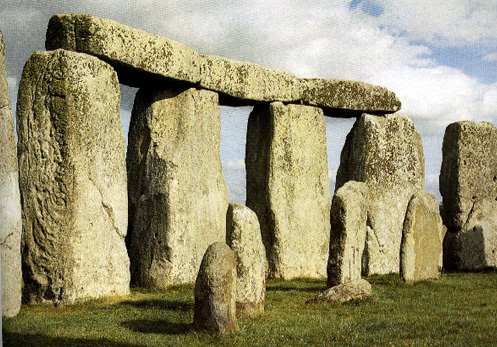A group of archaeologists now contend it was indeed symbolic - but not religious symbolism, it was more political.
The Stonehenge Riverside Project (SRP) consortium has spent 10 years exploring Stonehenge and its surrounding landscape along with the social and economic conditions during the monument's main stages of construction (3,000 B.C. and 2,500 B.C.) and have concluded that Stonehenge was built as a monument to show the unity the peoples of Britain after a long period of conflict and regional difference between the eastern and western regions. Its stones are thought to have symbolized the ancestors of different groups of earliest farming communities in Britain, with some stones coming from southern England and others from west Wales.
Bold, social ideas from ancient people, but we also got the Pyramids, the Silk Road and the epic Gilgamesh during that time, so it is entirely believable. Stonehenge may also have been built in a place that already had special significance for prehistoric Britons. The SRP team have found that its solstice-aligned Avenue sits upon a series of natural landforms that, by chance, form an axis between the directions of midsummer sunrise and midwinter sunset.

Stonehenge. No aliens found. Credit: Wikipedia
Although many people flocked to Stonehenge yesterday for the summer solstice, it seems that the winter solstice was the more significant time of the year when Stonehenge was built 5,000-4,500 years ago.
"When Stonehenge was built", said Professor Mike Parker Pearson of the University of Sheffield, "there was a growing island-wide culture – the same styles of houses, pottery and other material forms were used from Orkney to the south coast. This was very different to the regionalism of previous centuries. Stonehenge itself was a massive undertaking, requiring the labour of thousands to move stones from as far away as west Wales, shaping them and erecting them. Just the work itself, requiring everyone literally to pull together, would have been an act of unification.
"When we stumbled across this extraordinary natural arrangement of the sun's path being marked in the land, we realized that prehistoric people selected this place to build Stonehenge because of its pre-ordained significance. This might explain why there are eight monuments in the Stonehenge area with solstitial alignments, a number unmatched anywhere else. Perhaps they saw this place as the centre of the world."
Previous speculation suggested the great stone circle was used as a prehistoric observatory, a sun temple, a place of healing, and a temple of the ancient druids. The Stonehenge Riverside Project's researchers have rejected all these possibilities after the largest program of archaeological research ever mounted on the iconic monument. As well as finding houses and a large village near Stonehenge at Durrington Walls, they have also discovered the site of a former stone circle – Bluestonehenge – and revised the dating of Stonehenge itself.
They also firmly reject the idea that Stonehenge was inspired by ancient Egyptians or extra-terrestrials. Parker Pearson said, "All the architectural influences for Stonehenge can be found in previous monuments and buildings within Britain, with origins in Wales and Scotland. In fact, Britain's Neolithic people were isolated from the rest of Europe for centuries. Britain may have become unified but there was no interest in interacting with people across the Channel. Stonehenge appears to have been the last gasp of this Stone Age culture, which was isolated from Europe and from the new technologies of metal tools and the wheel."






Comments